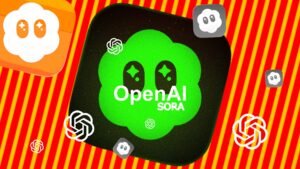
Google Bard, the innovative AI-powered language model, has recently(2023.07.13) undergone a series of significant updates that aim to revolutionize the way users explore possibilities, boost their creativity, and collaborate with others. With these new features, Bard is now more accessible, versatile, and tailored to meet the diverse needs of its users. Let’s take a closer look at the latest updates:
Here are Latest Updates in Google Bard:
- Bard is now available in over 40 new languages, including Arabic, Chinese, German, Hindi, and Spanish.
- Access to Bard has expanded to all 27 EU countries and Brazil.
- Google Lens is now integrated into Bard, allowing users to upload images and enhance creativity.
- Text-to-speech capabilities have been added to Bard in over 40 languages.
- Pinned and recent threads feature enables users to organize and continue previous conversations.
- Bard conversations can now be shared easily with others through shareable links.
- Users can modify Bard’s responses with options for simplicity, length, formality, and tone.
- Python code can be exported to Replit in addition to Google Colab for seamless workflow integration.
What’s New in Google Bard:
1. Expanded Language Support and Global Availability
In its continuous efforts to reach a broader audience, Google Bard has expanded its language support to over 40 new languages. Now users can enjoy the benefits of Bard in Arabic, Chinese (Simplified/Traditional), German, Hindi, Spanish, and many more. This update ensures that Bard is available to individuals from various linguistic backgrounds, fostering a truly global community. Furthermore, access to Bard has been extended to include all 27 countries in the European Union (EU) and Brazil, enabling users from these regions to engage with the platform seamlessly.
2. Integration of Google Lens for Enhanced Imagination
To further enhance the creative potential of its users, Bard now allows the upload of images alongside text in conversations. This integration is made possible through the powerful technology of Google Lens. By leveraging Google Lens, users can explore new avenues of imagination and creativity. Whether it’s gaining more information about an image or finding inspiration for a witty caption, the combination of Bard and Google Lens provides users with novel ways to express their creativity and engage with visual content.
3. Text-to-Speech Capabilities for Multilingual Experiences
In an effort to cater to diverse user preferences and enhance the overall user experience, Bard has introduced text-to-speech capabilities in over 40 languages. Users can now listen to responses instead of solely relying on reading them. This feature enables users to explore ideas and concepts in different ways, as hearing something aloud often brings a fresh perspective and new insights. Whether it’s Hindi, Spanish, or US English, Bard empowers users to bring their ideas to life through the power of voice.
3. Pinned & Recent Threads for Streamlined Organization
Recognizing the value of past conversations and the need for efficient organization, Google Bard has introduced the ability to pin and rename conversations. Users can now pick up where they left off with ease and manage multiple conversations simultaneously. This new feature ensures that no creative idea is lost, providing users with a seamless workflow and enabling them to maintain a continuous creative process.
4. Seamless Sharing of Bard Conversations
Google Bard now offers a convenient way to share conversations with others. Whether users want to share a specific part or the entire chat, Bard provides shareable links that make collaboration and sharing effortless. By simplifying the process of sharing, Bard encourages users to inspire one another, unlock new creative ideas, and foster collaboration. Now it’s easier than ever to showcase the creative process and involve others in the journey of ideation.
5. Enhanced Response Modification Options
Understanding that users often seek fine-tuning and customization, Bard introduces five new response modification options. Users can now tap on a response to make it simpler, longer, shorter, more professional, or more casual, according to their specific requirements. This feature empowers users to shape Bard’s responses more precisely and align them with their desired creative vision. By offering increased flexibility, Bard encourages users to refine and polish their ideas until they reach their desired outcome.
6. Expanded Code Export Capabilities
Building on its commitment to supporting programmers and streamlining workflows, Bard now offers an expanded range of code export options. Users can export Python code not only to Google Colab but also to Replit. This update enables users to seamlessly continue their programming tasks and integrate their Bard interactions into their preferred coding environments. By bridging the gap between AI and programming, Bard empowers users to explore the intersection of language and code effortlessly.
Conclusion
With these recent updates, Google Bard continues to push boundaries and redefine the creative landscape. By expanding language support, integrating Google Lens, introducing text-to-speech capabilities, enhancing organization features, facilitating conversation sharing, providing response modification options, and expanding code export capabilities, Bard reaffirms its commitment to empowering users and fostering a thriving community of creators. Whether you seek inspiration, collaboration, or the perfect response, Google Bard is there to assist you on your creative journey.
Information Source: Google










